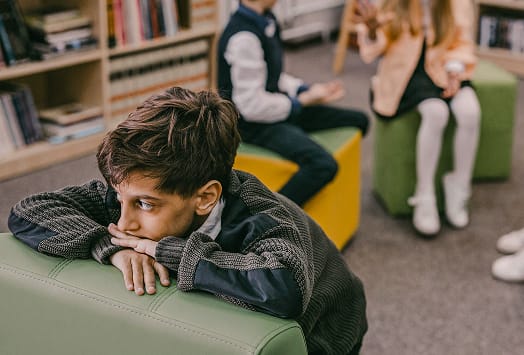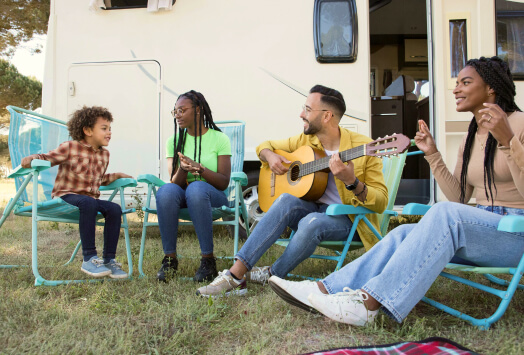You’re sitting at the dinner table, working from home. Your child isn’t far away, attending virtual classes online. You can’t help listening in to make sure they’re following instructions. You keep checking if they’re paying attention. You go over to mute and unmute them from time to time. Yes, they absolutely need your help—remote learning is complicated. But now you’re worried that you’re becoming a new-age helicopter parent.
In this brave new world of e-learning, how involved should you be in your child’s day-to-day schooling? Here’s what you need to know about parenting styles, helicopter parenting, and remote learning in the 2020s.
What are the four most common parenting styles?
To understand helicopter parenting, we have to go back to the four parenting styles. These patterns were first defined by psychologist Diana Baumrind in the 1960s, then expanded upon by fellow psychologists E. E. Maccoby and J. A. Martin in the 1980s.
Arising from the intersection of two dimensions of parenting, demandingness and responsiveness, the four classic parenting styles are: authoritative (high demandingness and high responsiveness), authoritarian (high demandingness and low responsiveness), indulgent/permissive (low demandingness and high responsiveness), and uninvolved/neglectful (low demandingness and low responsiveness).
Studies have found that authoritative parenting produces the most positive developmental outcomes in kids—we want to set reasonable expectations for our children and actively support them. But there’s always the danger that parents can become a little too active.
What does the phrase “helicopter parent” mean?
A parent who is over-involved in their child’s life, constantly hovering and needlessly acting on their child’s behalf, is a helicopter parent. Common behaviors of helicopter parents include: doing their child’s homework, arguing with teachers about grades, bringing forgotten items to school, and picking out all of their child’s activities (or even their child’s friends).
What generation are helicopter parents?
Helicopter parenting is a modern phenomenon. There are a variety of reasons why today’s parents might feel more protective of their children than parents past. Our contemporary achievement culture prioritizes resume-building, increasing the interest that parents take in their child’s schooling from a young age. In an increasingly unstable world, some parents might also be more concerned about their child’s safety. And technology has made constant contact possible.
What’s wrong with helicopter parenting?
Helicopter parenting can limit kids’ growth. When parents do everything for their children, kids don’t get the opportunity to make mistakes, which are valuable learning opportunities; and they may begin to question their own abilities, damaging their sense of independence. They may also internalize their parents’ worrying, contributing to their own anxiety. Children of helicopter parents sometimes even develop a sense of entitlement, expecting everything to be done for them.
How can you avoid hovering too much over your child’s Zoom classes?
In a world where remote learning is the norm, parents may find it difficult to set healthy boundaries because many kids, especially younger ones, simply can’t manage virtual classes on their own. You might have to help your child focus, solve technical problems, and guide them through activities.
At the same time, not all parental involvement is good, and you can definitely be a helicopter parent on Zoom. Teachers have shared stories of disruptive parents cutting in during classes with lesson recommendations or whispering answers to their children.
What is good parental involvement? When it comes to older, more independent kids, Omari Eccleston-Brown, director of the private tutoring company Believe in Learning, told the New York Times, “I want parents to be available but not necessarily to be present.” That means helping your child practice using class technologies on their own and providing resources—like written passwords and instructions—for them to refer to if they have trouble.
Instead of lingering near your child for the whole school day, try setting times for a few regular check-ins. Kids can save non-urgent questions for those times. You can also put a sign on your workspace that makes it clear when you can be interrupted for urgent issues. Soon enough, you’ll have created a new routine, and your child won’t need as much help from you.
That being said, younger children participating in virtual learning may benefit from a more active parental presence. Kids this age sometimes need an in-person hand to redirect and reaffirm their focus and progress with a high-five or a gentle tap. Teachers can’t see anything outside the frame of the webcam, so they appreciate parents who can help keep track of things like distracted fidgeting and penmanship on worksheets. It’s all about supporting without disrupting.
Let us know what’s working for you and your child as we all learn how to manage virtual classes together—join the discussion on Instagram @hellosawyer.
















